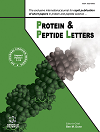-
oa Editorial [Hot Topic: Molecular Chaperones and Protein Quality Control (Guest Editor: Carlos Ramos)]
- Source: Protein and Peptide Letters, Volume 18, Issue 2, Feb 2011, p. 100 - 100
-
- 01 Feb 2011
Abstract
Molecular chaperones are a class of proteins that aid in the folding of other proteins. They are also referred to as heat-shock proteins (HSP) because they were first described as proteins induced during thermal stress. Although the term molecular chaperone was used first by Laskey and co-workers (Nature 275, 416-420, 1978) to describe the function of nucleoplasmin, a protein that promotes the correct oligomerization of histones by preventing their aggregation during assembly in chromatin, the concept of molecular chaperones may be better described by a statement from a paper published by Hendrick and Hartl (Annu. Rev. Biochem. 62, 349-84, 1993): “we define a molecular chaperone as a protein that binds to and stabilizes an otherwise unstable conformer of another protein, facilitates its correct fate in vivo: be it in folding, oligomeric assembly, transport to a particular subcellular compartment, or controlled switching between active/inactive conformations”. Shortly after their discovery, we learned that chaperones are expressed constitutively and assist in a diverse array of cellular processes that continually challenge cellular protein homeostasis and require protein quality control systems. In this context, molecular chaperones facilitate cellular protein homeostasis by promoting protein folding and degradation. In fact, many proteins become unstable at high temperatures and the heat shock response acts as a protective cellular mechanism against stress-induced protein damage. Failure to reach or maintain the correctly folded structure can have serious consequences and can lead to aggregation, which is often associated with the assembly of the misfolded protein into fibrillar aggregates. These aggregates are commonly known as amyloid fibrils and are associated with more than 40 pathological disorders in humans. Additionally, molecular chaperones are also responsible for maintaining the folding, stability and function of many proteins involved in signal-transduction pathways, cell-cycle regulation and apoptosis. Therefore, chaperones are considered to be stabilizers of the cancer phenotype. This special issue aims to provide current review articles about molecular chaperones and their role in protein quality control. The review by Tiroli-Cepeda and Ramos gives a general view of protein homeostasis as well as the structure and function of the main chaperone families. The review by Anderson et al. centers on protein disorders caused by defects on tRNA charging or abnormal protein degradation, ribosomopathies and chaperonopathies. Fan and Young give an overview of the important role of molecular chaperones on protein translocation into the mitochondria, which is critical for this organelle to maintain proper functions. Da Silva and Borges center their review on Hsp70, covering the structural and functional aspects of this chaperone machinery. Because chaperones are ubiquitous and essential for the life of all species, a greater understanding of the role of these chaperones in protein homeostasis in pathogens will aid in the fight against microorganisms. The review by Shonhai et al. describes molecular chaperones from protozoan parasites and their relation to human health, and the review by Fattori et al. describes the important role of chaperones in the secretion of virulence factors into host cells. Finally, Monteiro and Cano present the role of SIRT1 in protein homeostasis. SIRT1 has been implicated in aging and caloric restriction. Because this protein interacts with heat shock factors, the heat shock response appears to be even more relevant than previously thought as it is intrinsically involved in many aspects of human health. As seen from the aforementioned remarkable abilities of chaperones, these proteins are potential drug targets. Treatments for conformational diseases caused by protein misfolding may be achieved by enhancing the function of chaperones. On the other hand, anticancer therapies may be developed by inhibiting chaperones to significantly weaken a cancer cell, causing regression of tumor growth. It remains to be seen whether therapies involving molecular chaperones will be successful in reverting misfolded protein diseases. However, a better understanding of the mechanism of action of molecular chaperones will truly provide insight into cellular function under normal and stressed conditions.


